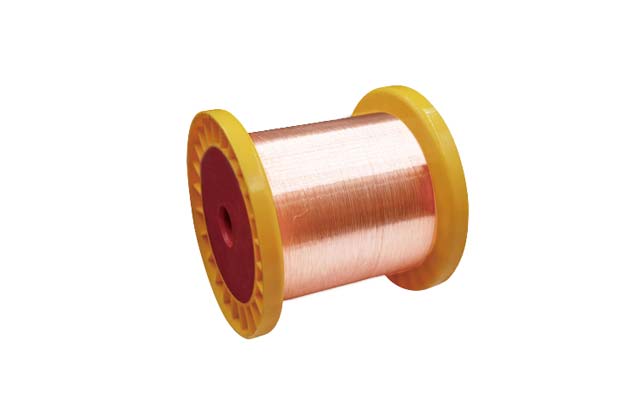Symbol CuPurity ≥99.95%Size 0.0160-14.00 mmType Copper wire for cableElongation ≥10%Tensile /
Copper Wire
Electrical round copper wire is a circular cross-sectional wire made from high-purity copper as raw material, which is drawn and annealed by a copper wire drawing machine. It is the core material for power transmission and electrical equipment manufacturing. It has the advantages of high conductivity, good ductility, and processing adaptability, and is widely used in scenarios such as transformers, motors, cables, etc.
Core Features
Conductivity: The conductivity of copper is as high as 59.6 × 10 ⁶ S/m (International Annealed Copper Standard IACS 100%), second only to silver.
Mechanical properties: The elongation of soft copper wire can reach 30%~40%, and the tensile strength of hard wire is ≥ 300 MPa.
Corrosion resistance: The copper surface naturally oxidizes to form a protective film, suitable for general environments.
Economy: The cost is lower than that of coated copper wire, suitable for large-scale power engineering.
Manufacturing Process
The production process of electrical round copper wire mainly includes melting, continuous casting, rolling, drawing, annealing, quality inspection. Specifically, as follows:
Copper Material Preparation
Electrolytic copper purification: The purity of electrolytic refined copper reaches 99.99% (ASTM B49 standard).
Continuous casting and rolling: Copper ingots are melted and cast into copper rods with a diameter of 8mm using either upward drawing or immersion methods.
Wire Drawing Forming
Multi pass drawing: The tungsten carbide mold is used to gradually thin the wire, with a wire diameter error of ≤± 0.001mm.
Lubrication and cooling: Use saponification solution or oil-based lubricants to reduce copper wire oxidation caused by frictional heat.
Annealing Treatment
Continuous annealing furnace: heated to 400-600 ° C in protective gas (nitrogen or hydrogen) to eliminate work hardening.
Online Detection: Surface cracks and internal defects are detected using eddy current flaw detectors.
Quality Inspection
Conductivity test: Use the four probe method to measure electrical resistivity.
Mechanical performance testing: The tensile testing machine detects the tensile strength and elongation.
Insulation withstand voltage test: Apply a voltage of 1-5kV to test the breakdown strength of the paint film.
Copper Wire List
| Diameter |
Tolerance |
Elongation |
Volume Resistivity at 20℃ |
| 0.0160-0.0300 mm |
±0.001 mm |
≥6% |
≤0.017241 Q*mm²/m |
| 0.0300-0.0800 mm |
±0.002 mm |
≥8% |
≤0.017241 Q*mm²/m |
| 0.0800-0.160 mm |
±0.003 mm |
≥15% |
≤0.017241 Q*mm²/m |
| 0.160-0.400 mm |
±0.004 mm |
≥18% |
≤0.017241 Q*mm²/m |
| 0.400-14.00 mm |
±1% |
≥20% |
≤0.017241 Q*mm²/m |
Copper Wire Application
Round copper wire for electrical purposes has the advantages of excellent conductivity, low resistance loss, good ductility, easy processing into complex shapes, low cost, and suitability for large-scale applications. It is used as a conductor in wires and cables. Specifically, as follows:
Power Transmission
Overhead conductor: Hard copper wire is used for transmission lines.
Power cable: Soft copper wire is used as a conductor, combined with XLPE insulation, for medium and low voltage distribution systems.
Electrotechnical Equipment
Transformer winding: Oxygen free copper enameled wire reduces eddy current losses.
Motor coil: Polyester imine enameled wire with a temperature resistance of 180 ° C, used for electric vehicle drive motors.
Electronic Appliances
Household appliances: refrigerator compressor, air conditioning motor winding wire.
PCB jumper: Ultra fine bare copper wire (0.1mm) is used for internal connection of circuit boards.
Industry and Energy
Welding machine cable: high flexibility soft copper wire.
Photovoltaic connection wire: Tin plated copper wire for oxidation prevention, used for series and parallel connection of solar panels.
Transportation Field
Rail transit contact network: Copper alloy stranded wire enhances wear resistance.
Automotive wiring harness: High temperature resistant enameled wire (200 ° C) is used for wiring in the engine compartment.


